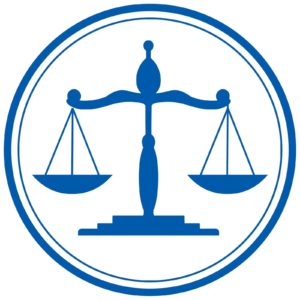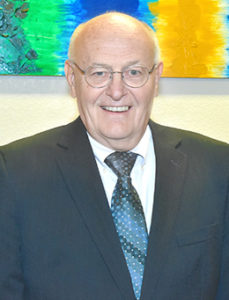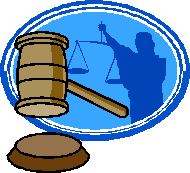
Court Limits Liberal Citation Remedies
Sharp Thinking
Thinking
No. 177 Perspectives on Developments in the Law from Sharp-Hundley, P.C. February 2020
Court Limits Liberal Citation Remedies
By John T. Hundley, john@sharp-hundley.com

Hundley
An Appellate Court panel in Chicago has limited sharply the use of citations to discover assets to apply remedies provided by the garnishment statute.
Contrasting the garnishment statute (735 ILCS 5/12-701 et seq.) with the citation statute (735 ILCS 5/2-1402), the panel said the garnishment statute was “distinct from” § 2-1402 and “remedies available in one statute cannot be invoked in proceedings under the other without following the necessary steps set out by the statute.” Hayward v. Scorte, 2020 IL App (1st) 190476.
In Hayward, plaintiffs obtained a large judgment against a corporation and served third-party citations on its owners. The trial court found the owners’ responses inadequate and entered a conditional judgment against them, a remedy available under § 12-706 of the garnishment statute. See 735 ILCS 5/2-1402(k-3) (a citation court may enter any order or judgment that could be entered in a garnishment proceeding).
However, the appellate panel found that subsection k-3 “does not grant the trial court broader powers than it would have in a garnishment proceeding.” “If the trial court did not have authority to enter a conditional judgment against respondents under the garnishment statute, it could not do so pursuant to 2-1402(k-3),” it said.
The panel found that the trial court would not have had the authority under the garnishment  statute to enter a conditional judgment due to an inadequate response. Citing § 12-706(a) of that statute, it said conditional judgments were appropriate only where the garnishee “fails to appear and answer.” Allegedly inadequate responses are dealt with by contesting the answer and having a trial (735 ILCS 5/12-711(a)), the panel said. “The unambiguous language of the garnishment statute . . . does not authorize the trial court to enter a conditional judgment where a party appears and answers, but his answer is insufficient or incomplete.”
statute to enter a conditional judgment due to an inadequate response. Citing § 12-706(a) of that statute, it said conditional judgments were appropriate only where the garnishee “fails to appear and answer.” Allegedly inadequate responses are dealt with by contesting the answer and having a trial (735 ILCS 5/12-711(a)), the panel said. “The unambiguous language of the garnishment statute . . . does not authorize the trial court to enter a conditional judgment where a party appears and answers, but his answer is insufficient or incomplete.”
The trial court in Hayward also had imposed a final judgment upon the citation respondents upon a finding that they had embezzled and converted assets by transferring to other contractors credit for work performed by their corporation (a construction company). Plaintiffs relied upon subsections (c)(3) and (c)(6) of the citation statute in urging it to do so. However, the panel said that those provisions “do not authorize the court to enter the full underlying judgment against third parties without finding that the amount represented certain converted or embezzled assets of the judgment debtor or an amount the third party was indebted to the judgment debtor.”
Moreover, the panel noted that § 2-1402 “explicitly sets forth only one circumstance in which the court may enter the full unpaid amount of the underlying judgment against a third party” – when the citation respondent transfers or allows transfer out of its possession of property at least equal to the value of that judgment. § 2-1402(f)(1).
However, in Hayward the allegedly improper transfers occurred prior to service of the citation. “Where a property transfer occurs prior to the initiation of citation proceedings, that evidence cannot support a finding that the respondent possessed those assets” and “if the record shows that the third party holds no assets of the judgment debtor, then the court has no authority to enter any judgment against the third party in the supplementary proceeding.”
The panel denied that its holdings left judgment creditors with no remedies for inadequate compliance with citation inquiries. “Contempt proceedings provide a means to address dissatisfaction with [respondents’] attempts at compliance,” it said.
Hayward is a significant case. For decades, use of citations to discover assets has grown, largely  because that judgment enforcement device was seen as more flexible and liberal than the garnishment statutes (we include the wage deduction statute (735 ILCS 5/12-801 et seq.) as a garnishment statute, though Hayward does not address it). That view was not flimsily founded; the citation statute, being a part of the Civil Practice Act (now Civil Practice Law, 735 ILCS 5/2-101 et seq.), was legislatively directed to be liberally applied. See 735 ILCS 5/1-106. The garnishment statutes, in contrast, were not part of the Civil Practice Act, were in derogation of the common law, and were strictly construed. See, e.g., In re Marriage of Souleles, 111 Ill. App. 3d 865 (1982); Marcheschi v. P.I. Corp., 84 Ill. App. 3d 873 (1980). Hayward does much to obliterate the liberality with which the citation statute has functioned – certainly when remedies from the garnishment statutes are being incorporated, and arguably in other instances as well.
because that judgment enforcement device was seen as more flexible and liberal than the garnishment statutes (we include the wage deduction statute (735 ILCS 5/12-801 et seq.) as a garnishment statute, though Hayward does not address it). That view was not flimsily founded; the citation statute, being a part of the Civil Practice Act (now Civil Practice Law, 735 ILCS 5/2-101 et seq.), was legislatively directed to be liberally applied. See 735 ILCS 5/1-106. The garnishment statutes, in contrast, were not part of the Civil Practice Act, were in derogation of the common law, and were strictly construed. See, e.g., In re Marriage of Souleles, 111 Ill. App. 3d 865 (1982); Marcheschi v. P.I. Corp., 84 Ill. App. 3d 873 (1980). Hayward does much to obliterate the liberality with which the citation statute has functioned – certainly when remedies from the garnishment statutes are being incorporated, and arguably in other instances as well.
Particularly widespread in recent decades has been the use of the citation statute on employers to reach judgment debtors’ wages. Hayward does not address the wage deduction statute, but the statutory differences will be a hard distinction to make when the logic of Hayward is applied in the citation-on-employers context.
It remains to be seen how Hayward is to be accepted by other courts. The Supreme Court has said that the decision of one district, division or panel of the Appellate Court is not binding on other districts, divisions or panels (O’Casek v. Children’s Home & Aid Society of Ill., 229 Ill. 2d 421 (2008). Thus other panels may disagree with Hayward, and whether Hayward is the final word on the subject may be doubted.
